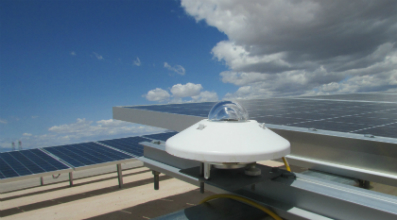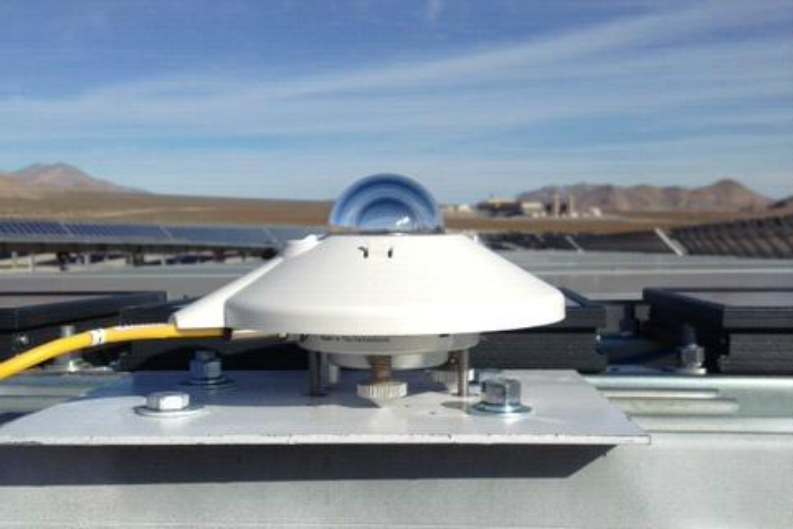Broad data relating to solar radiation levels is widely available in the form of maps, charts and statistics, but when it comes down to actual instillation these tools lack the local accuracy that is needed to design and position a viable solar energy facility.
Due to microclimate and topographical differences, changes in location of a few hundred kilometres can result in a change of hundreds of annual sunshine hours.
“To prove that the conversion from solar energy to electrical energy is done in the most efficient way, and on the most optimal location, accurate Solar Radiation data is required,” says Ruud Ringoir, product manager at Kipp & Zonen.
“For calculation of return on investment accurate data is essential, simply because Solar Radiation is not a constant. Because Solar Power plants still increase in capacity small errors in measurement data represent large energy amounts and money.”
A clear example of the effects produced by microclimates is the ‘Camanchaca’, a thick coastal fog that occurs in the morning at low altitudes near the coast in the northern part of Chile. This fog helps to create places like the Fray Jorge Forest where, in a dry Mediterranean climate area, one can see the northernmost Valdivian temperate rainforest.But this microclimate is a major challenge from the point of view of a solar energy developer. Currently, the biggest source of uncertainty for large scale PV development comes from the input data.
 “With worldwide over 100,000 instruments installed, Kipp & Zonen pyranometers have proven to be extremely stable over decades of operation. This helps to get consistent data, not only on each location but also when comparing with other sites and even other technologies,” explains Ringoir.
“With worldwide over 100,000 instruments installed, Kipp & Zonen pyranometers have proven to be extremely stable over decades of operation. This helps to get consistent data, not only on each location but also when comparing with other sites and even other technologies,” explains Ringoir.
“The CMP series is used on any location on earth with an unmatched reliability. That is why the CMP series is the standard for both prospecting and day-to-day efficiency calculations. Even maintenance data is retrieved from the relation between Input (Solar) and output (Electrical) data.”
Kipp & Zonen has been manufacturing pyranometers for over 80 years. These instruments are designed for measuring the total (global) irradiance from the sun and sky falling on a plane surface in the wavelength range from 300 nm (nanometres) to 3,000 nm. Kipp & Zonen produces models at all price and performance points, up to the very best available, designed for a long operating life in all environments, from deserts to the Antarctic.
Building on the proven CMP Series design and technology that is used around the world, its new SMP pyranometers add digital signal processing and interfaces optimised for industrial data acquisition and control systems.
“The SMP series makes interfacing, cabling, calibration and data interpretation much easier. All possible corrections are done in the instrument and the output is directly in W/m2. Direct interfacing to SCADA systems or inverters is possible. More data per instrument , like calibration history, temperature and power supply is available. The fact that all instruments have the same calibrated output makes exchange of instruments (like for calibration) much easier.”
Kipp & Zonen has developed a smart interface that features Modbus data communication for connection to programmable logic controllers (PLC’s), inverters, digital control equipment and the latest generation of data loggers. Amplified Voltage or Current outputs are also included for devices that have high level analogue inputs or current loop interfaces.
“No sensitive analogue inputs or loggers are required because the SMP’s have Modbus RTU, combined with either 0 – 1 Volt or 4 – 20 mA outputs. Handling the micro Volt signals inside the metal enclosure of the instrument reduces external influences like EMC disturbance and cable lengths. The combination of a proven sensor design with state of the art digital output is a perfect match for solar energy projects.”
Kipp & Zonen found increased data efficiency and reliability in measurements taken using smart interface technology. Following on from this it intends to improve its offering even further by integrating this technology across its portfolio and developing materials to reduce the cost of equipment maintenance.
“Expanding the Smart Interface technology over all our products will make connections easier and results better,” explains Ringoir.
“Further improvement we see in reducing the maintenance of our instruments. Good examples are the CMP10 and SMP10, which are direct replacements of the CMP 11 and SMP11 with built in desiccant that lasts for 10 years. This helps to improve reliability even further and increases the maintenance interval. The CMP10 even comes with a 5 year full warranty.”

This story was written by the editor of Renewable Energy Technology for the Winter issue, with the assistance of Ruud Ringoir, product manager at Kipp & Zonen.